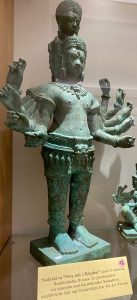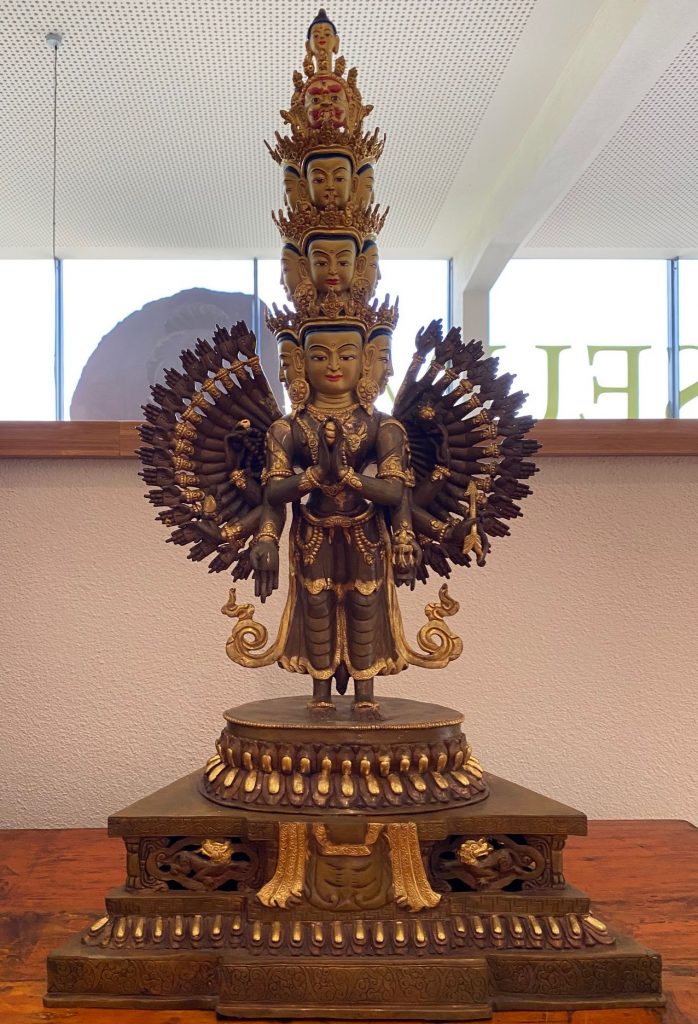In a country where most people subscribe to the “protestant work ethic” it is not easy to raise the issue of overwork. Yet, overwork needs to be become an issue of concern. In combination with overwork comes too little rest. Particularly the lack of rest and sleep is likely to cause serious medium and/or long-term effects. Burn-out is only one of the more obvious and drastic experience of exhaustion. The lifestyle of overwork has direct causal links to malnutrition and cardio-vascular risk factors. Once triggered these processes are even harder to control. The run on meditation exercises is only reiterating the huge difficulties to find a balance or antidote to overwork.
The Pew Research Center in Washington has published results from a survey in 2023 that shows that only about half of American people take the full vacation they are entitled to. The evidence of pervasive overwork in the U.S., not limited to the higher executive branches of employees, is hugely unhealthy. Physical and mental health is endangered and the cost to individuals and society are immense. Who cares? Well, we should care. (1) Documentation and monitoring this trend are the first elements of a strategy to counter these effects. Keep spreading the message that overwork is not without serious risks and mostly is followed by huge costs, someone will have to pay. (2) Start to analyse why we glorify overwork and keep doing so for centuries. The strive for higher pay, more money, higher profits, wealth or social prestige is a powerful driving force, of course. Legal measures or taxation to curb extra benefits of overtime have apparently had only marginal effects as they are circumvented, if people are too much focused on the immediate earnings effects. (3) Examine the question, why we glorify overwork? The Harvard Business Review published an article on this on 28th of August (just after the vacation period) to blame the culture of “workaholic” behaviour. In short, if your self-concept is defined exclusively through work, you will be doomed for overwork and its consequences. The next shot of overwork satisfies the urge for self-esteem and most likely also recognition from peers, colleagues and supervisors. This is an unbelievably heavy drug and addiction terribly hard to resist. (4) Who keeps pushing the agenda of overwork? We know for sure that it is not your children. If you have none, you will be at a higher risk to overwork and to push the overwork agenda compared to others, just because compared to families your time budget leaves more reserve capacity for time to rest. Employers set powerful incentives to reward any form of overtime and thereby overwork not only in pecuniary form, but also more rapid career advancement. Strongest and most addictive is your very own behaviour not to respect limits to working time. (5) Remedies to overwork are only partly in your own command. Of course, getting more sleep, doing more exercise, walk instead of drive to work are all fine. However, we need to address the danger of addiction, especially when we do not want to admit our dependency on overwork for self-esteem and recognition by others. Getting together with like-minded persons, for example, in trade unions, will make it easier to get collective solutions to isolated overwork. Higher wages should allow you to get more rest as you earn the same absolute amount with less input of hours. The danger of working even more, because the incentive to put in an extra hour of work has risen at the same time. Be aware of this “duality of higher pay”. Societies have lots of reasons to redistribute work. Between women and men, young and old as well as the “overworked” and “underworked”. 
Buddha Museum
In Fortführung des Themas “Geben und Nehmen” bot sich der Besuch des Buddha-Museums in Traben-Trarbach an. Als zentrales Thema gehört das Geben von Opfergaben, aber auch das Nehmen auf Seiten der Mönche zum buddhistischen Alltag. Durch das Geld als Tauschmittel hat das Geben, in Form von Naturalien oder zubereiteten Speisen, im Westen seine Bedeutung verloren. Die Armenspeisung oder Versorgung mit Lebensmitteln für Bedürftige hat sich in der caritativen Arbeit erhalten. Ansonsten ist der Tausch über Geld als Zahlungsmittel die kontaktlose Form des Gebens und Nehmens geworden. So hat mich am Buddha-Museum eigentlich überrascht, dass es einen festen Eintrittspreis gab, im Gegensatz zu Gotteshäusern anderer Religionen. Dies führte wohlmöglich zu der Besuchsruhe als fast alleinige Gäste an einem touristisch viel besuchten Wochenende im Juni 2021. Die Sammlung im Museum überzeugt durch die historische Tiefe (bis ins 12. Jahrhundert) und geografische Breite (weite Teile Asiens) der Buddha-Repräsentationen. Über Inhalte der buddhistischen Lehre informieren viele Tafeln neben den Figuren. Ansonsten bietet sich das Meditieren an zum Beispiel im Innenhof oder auf der Dachterrasse. Viel Zeit mitbringen ist notwendig. Als Beispiele habe ich eine kleine persönliche Galerie zusammengestellt. Beschleunigung und Aufgabenfülle treibt selbst die Buddha-Repräsentationen (siehe Abbildungen unten). Während die frühen Darstellungen noch mit wenigen zusätzlichen Händen auskommen, haben spätere Darstellungen bereits viel mehr Arme und fast genauso viele Köpfe, um die Arbeiten für die Gläubigen zu erledigen. Während zusätzliche Arme die Statue stabilisieren, werden weitere Etagen mit Köpfen selbst den Buddha sehr kopflastig werden lassen. Ist das Gesamtbildnis bereits gefährdet? Wir bleiben dran an der Story.
 Die ausgewählte Buddhafigur (erste Abbildung) ist ein Geschenk des Königreichs Bhutan an das Buddha-Museum aus dem Jahr 2012. Eine Lehmfigur mit Naturfarben. Eine Weiheinschrift befindet sich versiegelt im Inneren. Laut Beschreibung hielt die Gesandte des Königs die Figur während des gesamten Fluges auf ihrem Schoß. Meditation mit Halten einer Buddhafigur ist auch schon eine beachtliche Leistung. Medienabstinenz ist für die jüngere Generation in 2021 kaum noch vorstellbar. Das sehen sicherlich unsere Gerichte schon so. Handyverbot ist Grundrechtsberaubung, da Informations- und Mein
Die ausgewählte Buddhafigur (erste Abbildung) ist ein Geschenk des Königreichs Bhutan an das Buddha-Museum aus dem Jahr 2012. Eine Lehmfigur mit Naturfarben. Eine Weiheinschrift befindet sich versiegelt im Inneren. Laut Beschreibung hielt die Gesandte des Königs die Figur während des gesamten Fluges auf ihrem Schoß. Meditation mit Halten einer Buddhafigur ist auch schon eine beachtliche Leistung. Medienabstinenz ist für die jüngere Generation in 2021 kaum noch vorstellbar. Das sehen sicherlich unsere Gerichte schon so. Handyverbot ist Grundrechtsberaubung, da Informations- und Mein ungsfreiheit darüber ausgeübt werden. “Geben und Nehmen” über den Lebensverlauf ist nicht nur eine Meditationsreise wert, es beschreibt ein soziologisches Forschungsprogramm von großer Tragweite. Theoretische und empirische Durchdringung ist anspruchsvoll, beginnt doch das Leben von der ersten Zellteilung an mit dem Nehmen, aber auch dem Geben von genetischen Programmen. Dann sehen wir ein weiteres “Phase-in” des Gebens über den Lebensverlauf auf vielfältige Weise. Wollen oder sollen wir das bilanzieren? Den Menschen ist das weitesgehend freigestellt, Tieren weniger. In Annäherung an das Lebensende stellen sich viele Menschen erneut diese Frage des Gebens und Nehmens auf existentielle Weise. Die neue Bewertung der Sterbehilfe als neue Balance von Geben und Nehmen am Lebensende beendet vermeintlich den Lebensverlauf, die intergenerationellen Fragen wie Vererbung und Ungleichheiten schreiben jedoch den Zyklus des Gebens und Nehmens fort.
ungsfreiheit darüber ausgeübt werden. “Geben und Nehmen” über den Lebensverlauf ist nicht nur eine Meditationsreise wert, es beschreibt ein soziologisches Forschungsprogramm von großer Tragweite. Theoretische und empirische Durchdringung ist anspruchsvoll, beginnt doch das Leben von der ersten Zellteilung an mit dem Nehmen, aber auch dem Geben von genetischen Programmen. Dann sehen wir ein weiteres “Phase-in” des Gebens über den Lebensverlauf auf vielfältige Weise. Wollen oder sollen wir das bilanzieren? Den Menschen ist das weitesgehend freigestellt, Tieren weniger. In Annäherung an das Lebensende stellen sich viele Menschen erneut diese Frage des Gebens und Nehmens auf existentielle Weise. Die neue Bewertung der Sterbehilfe als neue Balance von Geben und Nehmen am Lebensende beendet vermeintlich den Lebensverlauf, die intergenerationellen Fragen wie Vererbung und Ungleichheiten schreiben jedoch den Zyklus des Gebens und Nehmens fort. 

